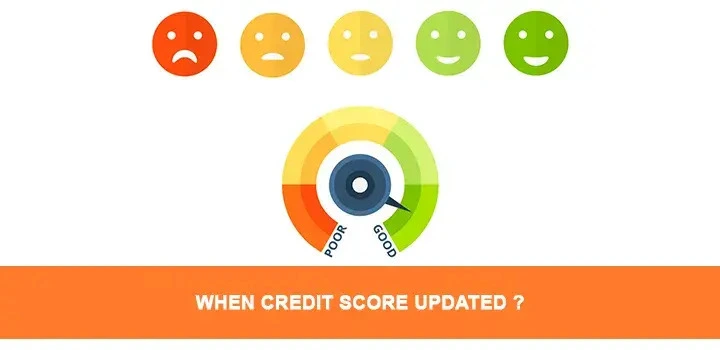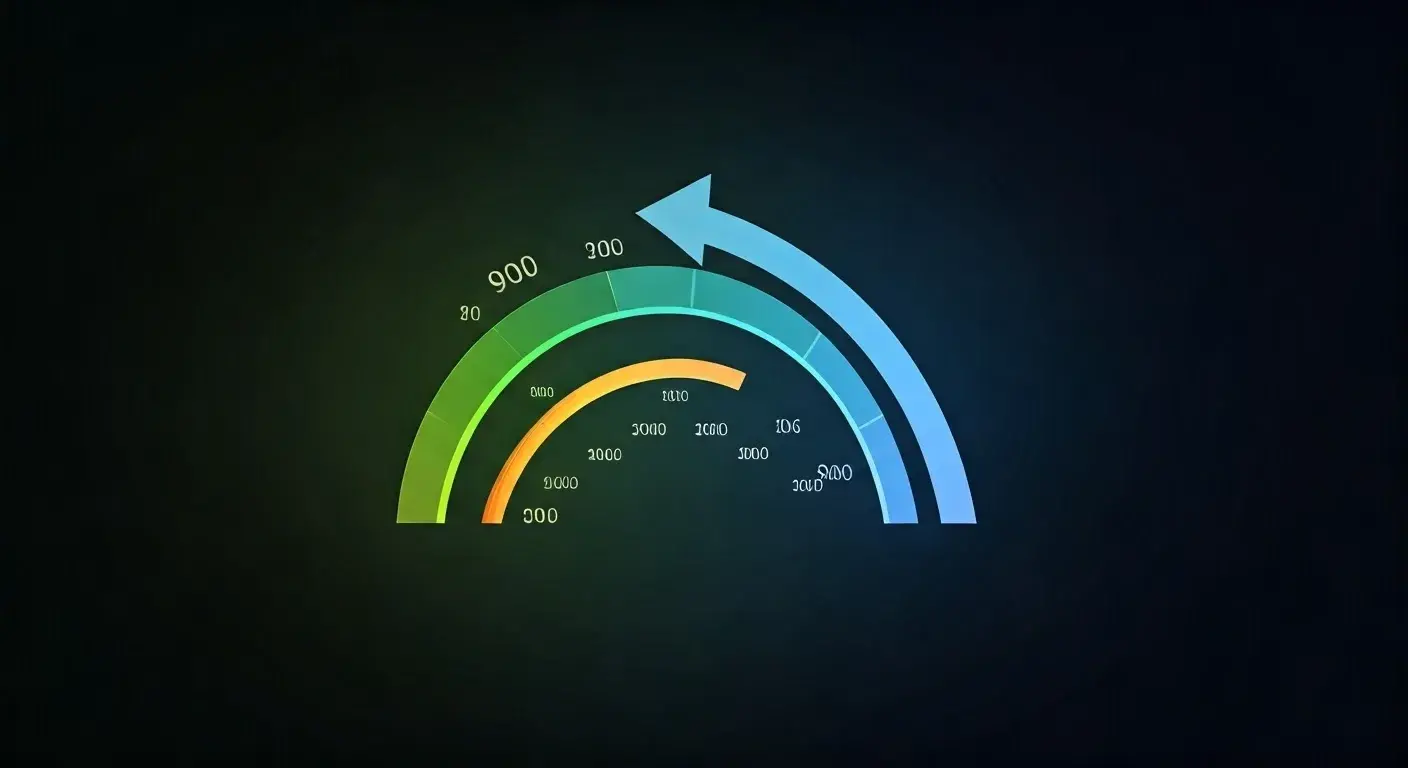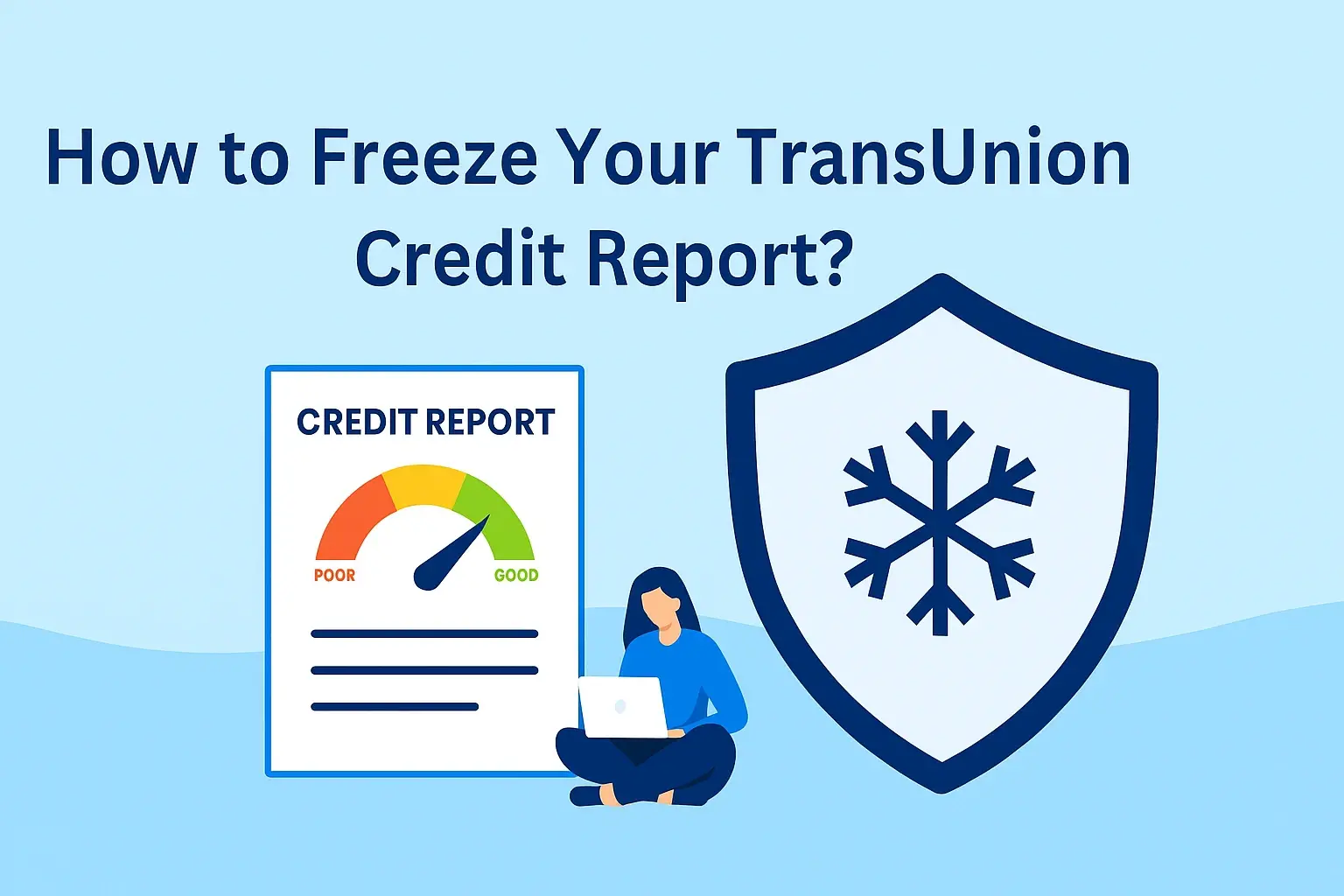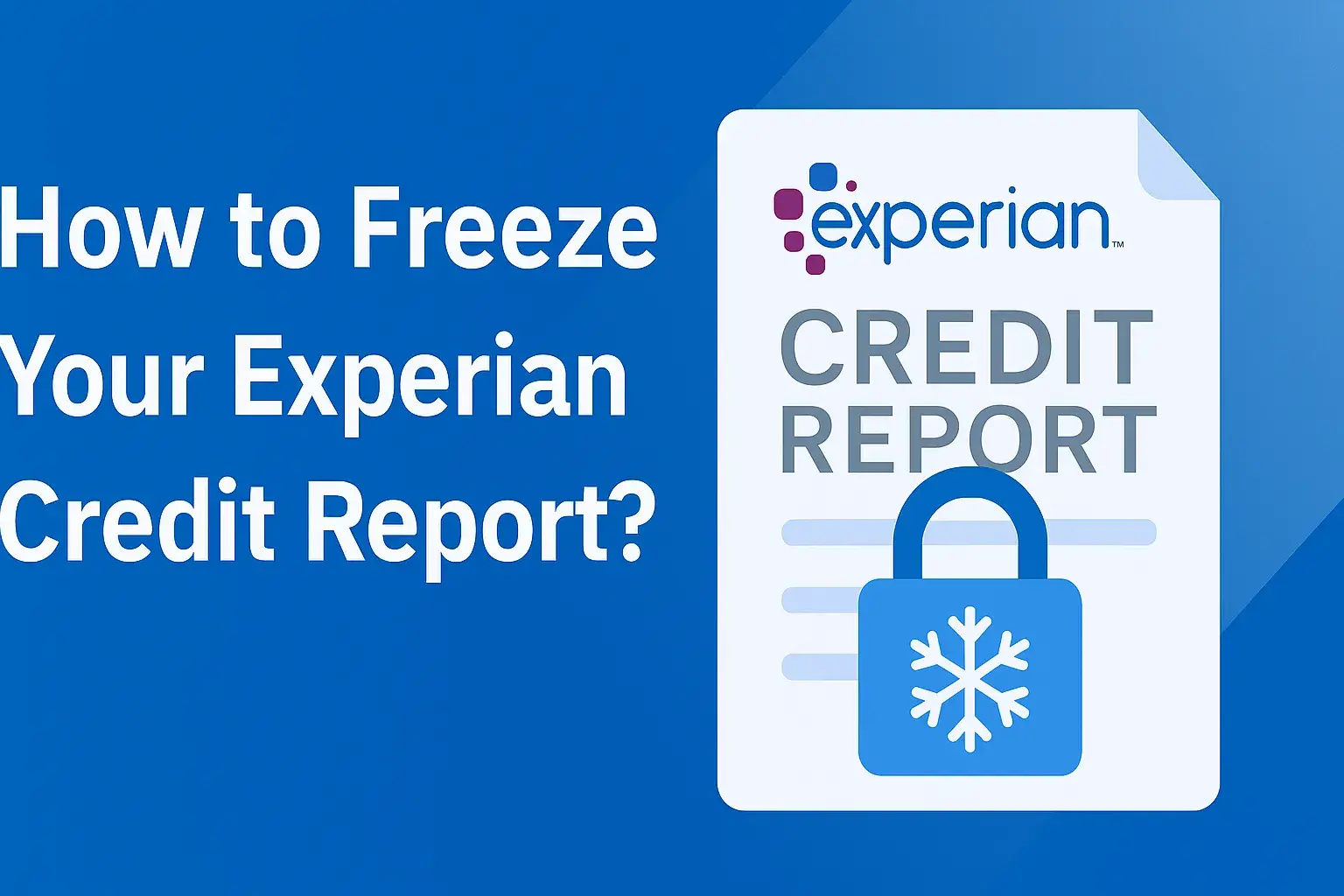-
Posted on: 21 Dec 2022

-
Understanding when your credit score is updated is crucial for managing your financial health. This comprehensive guide will demystify the update cycles, detailing how and when changes occur, and what factors influence them, so you can proactively monitor your creditworthiness.
Understanding Credit Score Updates
The question "When credit score updated?" is a common one for anyone seeking to improve their financial standing. Your credit score is not a static number; it's a dynamic reflection of your financial behavior. It changes as new information is reported to the credit bureaus. Understanding the frequency and triggers of these updates is key to effectively managing your credit. This guide will provide a comprehensive overview of how and when your credit score is updated, empowering you to make informed financial decisions in 2025 and beyond.
How Credit Scores Are Calculated
Before delving into update schedules, it's essential to grasp how credit scores are generated. Credit scoring models, such as FICO and VantageScore, use complex algorithms to analyze the data in your credit reports. These models weigh various factors to produce a three-digit number that lenders use to assess your credit risk. While the exact proprietary formulas are secret, the key components are widely known. Understanding these components helps explain why and when your score changes.
The primary factors influencing your credit score are:
- Payment History (35%): This is the most significant factor. Making on-time payments is crucial. Late payments, defaults, bankruptcies, and collections can severely damage your score.
- Amounts Owed (30%): This refers to your credit utilization ratio – the amount of credit you're using compared to your total available credit. Keeping this ratio low is beneficial.
- Length of Credit History (15%): A longer credit history generally leads to a higher score, as it provides more data for lenders to assess your behavior over time.
- Credit Mix (10%): Having a mix of different types of credit (e.g., credit cards, installment loans like mortgages or auto loans) can positively impact your score, showing you can manage various credit products responsibly.
- New Credit (10%): Opening multiple new credit accounts in a short period can signal higher risk and may temporarily lower your score.
These percentages represent the general weighting by FICO, though VantageScore may have slightly different emphases. Regardless of the model, consistent positive financial habits are the bedrock of a good credit score.
The Role of Credit Bureaus
Credit bureaus, also known as credit reporting agencies, are the central repositories of your credit information. In the United States, the three major bureaus are Equifax, Experian, and TransUnion. These agencies collect data from lenders, creditors, and public records. When you apply for credit, lenders pull your credit report from one or more of these bureaus to evaluate your creditworthiness. The information on these reports directly influences your credit score. Therefore, the timing of updates to your credit reports is directly linked to when your credit score is updated.
Creditors and lenders report your account activity to the credit bureaus on a regular basis. This reporting cycle is typically monthly. However, the exact timing can vary slightly between different lenders. Some might report on the day your statement closes, while others might report a few days later. This monthly reporting is the primary mechanism through which changes in your financial behavior are reflected in your credit report and, consequently, your credit score.
When Your Credit Score is Updated: The Cycle
The most direct answer to "When credit score updated?" is that it's updated whenever new information is reported to the credit bureaus and processed by the scoring model. This reporting typically happens on a monthly cycle. Here's a breakdown of the typical process:
- Your Financial Activity: Throughout the month, you make payments, use credit, open new accounts, etc.
- Lender Reporting: Your creditors and lenders compile this activity and report it to the credit bureaus. This usually occurs once a billing cycle, often shortly after your statement closing date.
- Credit Bureau Processing: The credit bureaus receive this data and update your credit report. This processing can take a few days.
- Scoring Model Update: Credit scoring companies (like FICO or VantageScore) access the updated credit report data. When a lender requests your score, or when a monitoring service checks it, the scoring model uses the most recent data available to generate your score.
Therefore, your credit score can technically be updated multiple times a month, but significant changes usually align with the monthly reporting cycle of your creditors. It's important to note that not all changes are instantaneous. While a late payment might be reported within days, its full impact on your score might take a billing cycle to fully manifest.
Factors That Trigger Updates
Several actions and events can trigger an update to your credit score. Understanding these triggers helps you anticipate changes and manage your credit proactively. The most common triggers are directly related to the components of your credit score.
Payment History
Your payment history is the most influential factor in your credit score. Any change in your payment status will eventually be reported and will update your score.
- On-time payments: Consistently paying your bills on time is the best way to maintain and improve your score. Each on-time payment reinforces positive behavior.
- Late payments: A single late payment (30 days or more past due) can significantly lower your score. The severity of the impact depends on how late the payment is (30, 60, 90 days) and your existing score. This information is typically reported to the bureaus within a few weeks of the due date.
- Missed payments: Missing a payment entirely, leading to it being sent to collections or charged off, will have a severe negative impact.
- Defaults and bankruptcies: These are major negative events that will drastically lower your score and remain on your report for several years (7-10 years typically).
Credit Utilization
This refers to the ratio of your revolving credit balance to your credit limit. A lower utilization ratio is generally better.
- Paying down balances: When you pay down your credit card balances, your utilization ratio decreases. If your statement closing date falls after you make a significant payment, this lower utilization may be reported to the bureaus in the next reporting cycle, potentially boosting your score.
- Increasing credit limits: If your credit limit is increased by a lender (and your balance remains the same), your utilization ratio will decrease. This can also lead to a score update.
- Maxing out cards: Conversely, carrying high balances or maxing out credit cards will increase your utilization and negatively impact your score.
Length of Credit History
This factor considers the age of your oldest account, the age of your newest account, and the average age of all your accounts.
- Opening new accounts: While sometimes necessary, opening new accounts lowers the average age of your credit history, which can temporarily decrease your score.
- Closing old accounts: Closing an old, well-managed account can reduce your average credit history length and potentially increase your credit utilization if it was a revolving account.
Credit Mix
Having a variety of credit types (e.g., credit cards, installment loans) can be beneficial.
- Opening new loan types: Taking out a new type of loan, like an auto loan or personal loan, can diversify your credit mix. This change is usually a minor factor but can contribute to score updates.
New Credit
This refers to recent credit inquiries and new accounts.
- Applying for new credit: Each time you apply for credit, a hard inquiry is typically placed on your credit report. A few hard inquiries over a short period are generally not a major issue, but many can signal risk and lower your score.
- Opening new accounts: As mentioned, opening multiple new accounts in a short timeframe can negatively impact your score.
How Often Do Credit Reports Get Updated?
Credit reports are not static documents; they are dynamic and are updated regularly. The primary update cycle for credit reports is monthly. Lenders and creditors are required by law to report account activity to the major credit bureaus (Equifax, Experian, TransUnion) at least once a month. This reporting typically occurs around the statement closing date of your account. For example, if your credit card statement closes on the 15th of each month, the information about your activity for that billing cycle will likely be sent to the credit bureaus shortly after that date.
The bureaus then process this incoming data. This processing time can vary, but it generally takes a few days to a week for the new information to appear on your credit report. Once the credit bureaus update your report, credit scoring models can then access this refreshed data to calculate your credit score. Therefore, while the underlying data is reported monthly, the actual score update can lag slightly depending on the timing of the lender's report, the bureau's processing, and when a score is requested.
Some events might lead to more immediate updates. For instance, if a debt collector reports a new collection account, or if a public record like a bankruptcy is filed, this information might be added to your report more quickly. However, for the vast majority of everyday credit activities, the monthly cycle is the norm.
Timeline of Credit Score Changes
The impact of changes on your credit score isn't always immediate. There's often a lag between when an event occurs, when it's reported, and when it affects your score.
Immediate Impact vs. Delayed Impact
Some changes can have a relatively quick impact, while others take time to manifest:
- Immediate (or near-immediate) Impact:
- Opening new accounts: The hard inquiry and the new account itself are usually reflected on your report within days, potentially causing a small, immediate dip in your score.
- Significant changes in credit utilization: If you pay down a large credit card balance and your statement closing date is soon after, the lower utilization might be reported quickly, leading to a faster score improvement.
- Delayed Impact:
- Late payments: While the late payment is reported within weeks, its full negative impact might not be fully realized until it's reflected in the next reporting cycle.
- Positive payment history: Building a good score through consistent on-time payments is a gradual process. Each on-time payment contributes, but the score increase is incremental over months and years.
- Closing old accounts: The impact on your average age of accounts and credit utilization might not be fully apparent until the next reporting cycle.
It's crucial to understand that credit scoring models look at your credit behavior over time. While some events cause immediate fluctuations, the long-term trend of your financial habits is what truly shapes your score.
Understanding Reporting Periods
The key to understanding when your score updates is to understand the reporting periods of your creditors. Each credit account has a billing cycle, which includes a statement closing date. Lenders report your account status as of that closing date to the credit bureaus. This means that if you make a payment or change your balance a day after your statement closes, that change won't be reflected on your credit report until the *next* statement closing date.
Example: Let's say you have a credit card with a statement closing date of the 20th of each month.
- On March 19th, your balance is $1,000, and your credit limit is $3,000 (33% utilization).
- On March 20th, your statement closes. This $1,000 balance is reported to the credit bureaus. Your score reflects this utilization.
- On March 25th, you pay your balance down to $500.
- This $500 balance will not appear on your credit report until the *next* statement closing date, April 20th.
- Therefore, your credit score will only reflect the lower utilization after April 20th, assuming the bureaus process the information promptly.
Monitoring Your Credit Score
Regularly monitoring your credit score and reports is essential to catch any errors and to track your progress. Fortunately, there are several ways to do this.
Free Credit Reports
Under the Fair Credit Reporting Act (FCRA), you are entitled to a free copy of your credit report from each of the three major bureaus (Equifax, Experian, TransUnion) every 12 months. You can request these reports through AnnualCreditReport.com. This is the official, government-mandated source for free credit reports. Reviewing these reports allows you to see the information that is being used to calculate your score and to dispute any inaccuracies.
While these reports are free, they don't always come with a current credit score. However, many credit card companies and financial institutions now offer free credit scores as a perk to their customers. These scores are often updated monthly, aligning with the reporting cycles.
Credit Monitoring Services
Numerous credit monitoring services are available, both free and paid. These services can provide:
- Regular credit score updates: Many offer daily, weekly, or monthly updates.
- Credit report monitoring: They alert you to significant changes on your credit reports, such as new accounts, inquiries, or negative marks.
- Identity theft protection: Some services offer additional features to help protect you from identity theft.
While these services can be very helpful, it's important to understand that the scores they provide might be different from the scores lenders use. They often use different scoring models or different versions of the FICO/VantageScore models. However, they offer a good general indication of your credit health and how it's changing.
In 2025, the landscape of credit monitoring continues to evolve, with more financial apps and banking platforms integrating these features directly into their services, making it easier than ever to stay informed.
Common Misconceptions About Credit Score Updates
Several myths surround credit score updates. Clarifying these can prevent unnecessary worry and help you focus on effective credit management.
- Myth: Checking your own credit score lowers it.
- Reality: Checking your own credit score (a "soft inquiry") does not affect your score. Only "hard inquiries," which occur when you apply for new credit, can have a minor impact.
- Myth: Credit scores are updated instantly.
- Reality: As discussed, there's a lag due to reporting cycles and processing times. Most significant changes appear on your report and affect your score within 30-45 days of the event.
- Myth: Closing old credit cards is always good for your score.
- Reality: Closing old accounts can negatively impact your credit utilization ratio and the average age of your credit history, potentially lowering your score. It's often better to keep old, unused accounts open (as long as they have no annual fees) and use them sparingly to maintain a good credit mix and history.
- Myth: All credit scores are the same.
- Reality: Different scoring models (FICO, VantageScore) and different versions of these models exist. Lenders may use different scores depending on the type of credit you're applying for.
- Myth: A single good deed can fix a bad credit history overnight.
- Reality: Credit scores are built over time. While positive actions help, rebuilding a significantly damaged credit history takes consistent, responsible behavior over many months and years.
Understanding these distinctions is crucial for effective credit management.
Maximizing Your Credit Score Through Informed Updates
Now that you understand when and how your credit score is updated, you can leverage this knowledge to your advantage. The goal is to ensure that positive financial behaviors are reflected in your reports and scores as efficiently as possible, while mitigating the impact of negative events.
Here are actionable strategies:
- Pay bills on time, every time: This is paramount. Set up automatic payments or reminders to avoid late fees and negative reporting.
- Keep credit utilization low: Aim to keep your balances below 30% of your credit limit, and ideally below 10%, especially on revolving credit. Make payments strategically around your statement closing dates to influence the reported utilization.
- Monitor your credit reports regularly: Use AnnualCreditReport.com to get your free reports annually and consider a credit monitoring service for more frequent updates. This helps you spot errors or fraudulent activity quickly.
- Be mindful of new credit applications: Only apply for credit when you truly need it. Too many applications in a short period can signal risk.
- Understand your statement closing dates: By knowing when your creditors report to the bureaus, you can time your payments to positively influence your reported credit utilization.
- Avoid closing old, unused credit accounts: Unless there's a compelling reason (like an annual fee you can't get waived), keeping older accounts open can benefit your credit utilization and average age of accounts.
By actively managing your credit and understanding the update cycles, you can work towards achieving and maintaining a strong credit score. In 2025, a good credit score remains a vital tool for securing favorable loan terms, renting an apartment, and even obtaining certain jobs.
Here's a quick comparison of how common actions impact your score and the typical reporting timeline:
Action Impact on Score Typical Reporting Timeline Making a payment on time Positive Reflected in next monthly report (within 30-45 days of the event) Making a payment 30+ days late Negative Reported within weeks, reflected in next monthly report (within 30-45 days of the event) Paying down credit card balance significantly Positive (lowers utilization) Reflected in next monthly report if balance change occurs before statement closing date Maxing out credit card Negative (increases utilization) Reflected in next monthly report if balance change occurs before statement closing date Opening a new credit account Slightly Negative (hard inquiry, lower average age) Inquiry and account reported within days; score impact often immediate Closing an old credit account Potentially Negative (higher utilization, lower average age) Impact reflected in next monthly report Applying for new credit (hard inquiry) Slightly Negative Inquiry reported within days; score impact often immediate Example Scenario (2025)
Let's consider Sarah, who is working to improve her credit score in early 2025. She has a credit card with a $5,000 limit and a statement closing date of the 10th of each month. Her current balance is $2,000, resulting in a 40% utilization ratio.
Goal: Lower her utilization to below 30%.
Action: Sarah decides to pay down her balance to $1,500. She makes this payment on March 8th, two days before her statement closing date of March 10th.
Update Cycle:
- March 10th: Her statement closes with a balance of $1,500. This lower balance is reported to the credit bureaus.
- Mid-March: The credit bureaus update their records with this new information.
- Late March/Early April: When Sarah checks her credit score (or when a lender pulls it), the scoring model will use the updated report reflecting the $1,500 balance. Her utilization is now 30% ($1,500 / $5,000).
What if she paid after the closing date?
If Sarah had paid down her balance to $1,500 on March 12th (after the March 10th closing date), the reported balance for March would still be $2,000. The $1,500 balance would then be reported on her April 10th statement, and the score improvement from lower utilization would be delayed by another month.
This illustrates the critical importance of understanding your specific reporting cycles and statement closing dates when aiming to influence your credit score updates.
Impact of a New Inquiry
Suppose Sarah also applies for a new store credit card on March 15th. A hard inquiry will be added to her credit report.
Update Cycle:
- March 15th: The store reports the inquiry to the bureaus.
- Within days: The inquiry appears on her credit report. Her credit score might dip by a few points due to this hard inquiry.
- Simultaneously: Her credit utilization update from the previous payment is still on track to be reflected in the next cycle.
Conclusion
Understanding "When credit score updated?" is fundamental to effective credit management. Your credit score is not static; it’s a dynamic reflection of your financial habits, updated whenever new information is reported to the credit bureaus, typically on a monthly cycle. Key triggers for updates include payment history, credit utilization, changes in credit history length, credit mix, and new credit applications. While some events, like new inquiries, have near-immediate effects, the full impact of most changes, such as late payments or reduced balances, is usually reflected within 30-45 days, aligning with your creditors' monthly reporting periods and statement closing dates. By actively monitoring your credit reports through resources like AnnualCreditReport.com and understanding your reporting cycles, you can strategically manage your credit to improve your score. Consistently paying bills on time and keeping credit utilization low are the most impactful actions. In 2025, leveraging this knowledge empowers you to navigate the credit landscape with confidence, paving the way for better financial opportunities.










